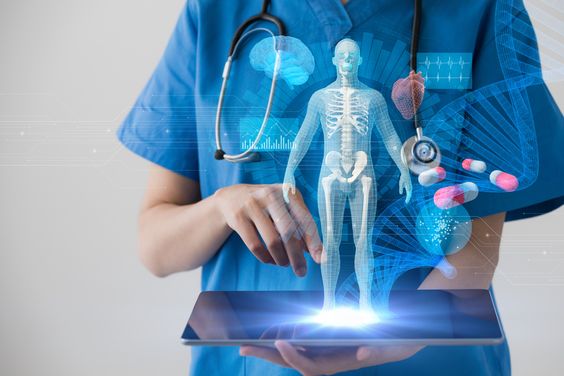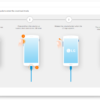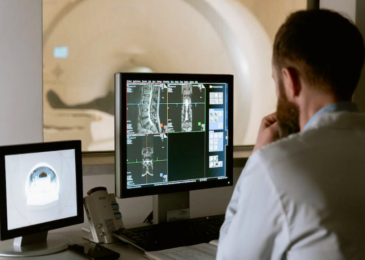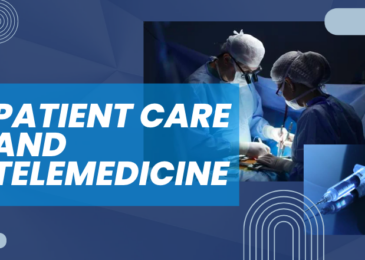Medical technology is complex and governed by higher standards than most other sectors. As a result, while smart devices have been a staple in other areas, they are just now taking hold in healthcare. Nonetheless, though they may be late to the party, they are certainly a welcome addition.
What are smart healthcare devices, you ask? They are models of medical equipment designed to be more intuitive. They can also communicate with each other when they are part of the same larger system. Which brings forth another question, what is the point of all these features?
Read on and let explore the benefits of smart healthcare devices.
Accuracy
Smart devices run on automatic computerized systems that are far more accurate than human capabilities allow. They are based on medical device integration software and are helpful in hospital settings where studies show errors can easily occur when healthcare workers are overwhelmed or fatigued. It is also handy for medical care that requires calculations.
As an illustration, consider a smart insulin pen. Diabetes patients have to check their sugar levels regularly and administer appropriate insulin doses. If the dosage is calculated wrongly, the consequences can be life-threatening. A smart insulin pen easily solves this problem by handling all the arithmetic. It measures the blood sugar level in a blood sample and tells patients how much insulin they need.
Easy Health Data Management
Health facilities have to store large volumes of data given the large number of patients they attend to. They also have to ensure that the records are highly accurate as any errors could affect the current and future treatment of a patient. Both of these issues make health data management complex and expensive.
Smart health devices simplify the transfer and subsequent management of health data. This is because they can upload patient results directly to record management software. For example, a smart hospital use BP machine can be connected to the hospital software. Once a patient’s reading is done, the data can be uploaded directly to their chart. This provides multiple benefits including:
- Swift service – patients do not have to wait longer as data is recorded in physical files
- Data accuracy – the transfer is seamless with no third party hence no chance for error
- Discretion – when data is transferred electronically only authorized parties can access it
Remote Monitoring of Patients
Chronic conditions require close monitoring to ensure that patients’ symptoms are under control. Smart devices aid in such monitoring as they are designed with cloud connectivity and can relay data to a physician in real-time. In the event of symptom spikes, the doctor could receive a notification and send help. They could also learn patient habits from the data trends and advise them accordingly.
Remote monitoring may also help the physician on the case analyze how well a treatment plan is working. This has been tested in a cancer treatment program and was found to improve patient outcomes. Doctors had a deeper understanding of patient progress, side-effects, and symptoms and were thus able to better adjust treatment plans.
Ease of Use
Home-use medical devices can be challenging to operate for people with no medical training. It is why most measurements taken at home tend to be inaccurate. Fortunately, smart healthcare devices have helpful features that can be used to mitigate such challenges.
Human voice prompts are one of the smart technologies being integrated into smart home-use healthcare devices to help patients. Say, for instance, you are using a home blood pressure machine. Some models are designed to guide you using the voice prompts to ensure you take your measurement correctly. Most patients find this helpful and eventually become adept at self-monitoring.
Intuitive Features
Intuition is one of the distinctive features of a smart healthcare device. Unlike non-smart devices, they do not just produce results or function in oblivion. They pick up on nuances and can interpret occurrences to a certain degree and act accordingly.
Smart pacemakers are a good case study for intuitiveness. Whereas old models solely regulated cardiac activity based on electrical signals, smart pacemakers can do much more. They can self-correct by sensing the level of activity and breathing rate of a patient. This is more effective in regulating heart-rate as it is more in tune with the body.
Flexibility
Medical devices have for the longest time been limited to rigid designs. Now, thanks to smart technology, you can monitor extensive healthcare data from a watch on your wrist. The range of flexibility this provides is astounding as the device is with you around the clock.
Aside from physical flexibility, smartwatches, and Fitbits offer additional flexibility in terms of the data they capture. You can keep a record of data such as:
- Sleep patterns
- Heart rate
- Physical activity
- Calories burned
- Menstrual cycles
Real-time access to this kind of data gives patients control over their health. They can set health goals for themselves and track their progress. Some patients also have an easier time noticing when they are unwell as their health data deviates from normal trends.
Conclusion
Smart technology has permeated numerous medical fields including prosthetics, diagnostics, and a few others. It is, however, yet to reach its full potential. There is much more research in the works which could yield some fascinating results. So much so that In a few years to come, smart technology could revolutionize the field of medicine. Until then, patients and healthcare workers alike, continue to benefit from the ease of intuitive and easy-to-use advancements.






